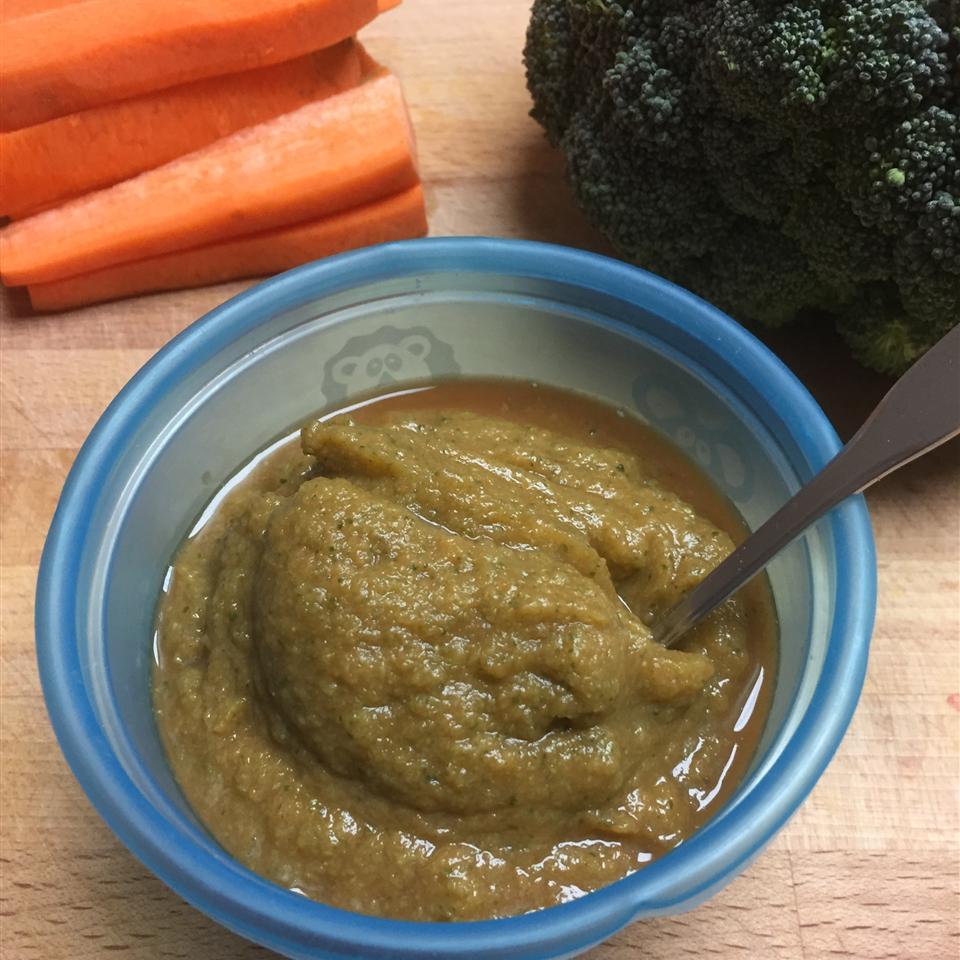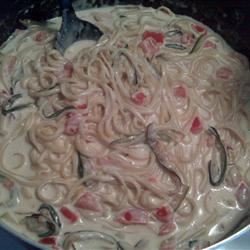
A magnificent salmon can be poached, glazed, and prepared for the table in a couple of hours, then kept in the refrigerator overnight. If the salmon is too long to fit in your fish poacher, you may cut off the head and tail, although the presentation is more beautiful with the entire fish intact. A six-pound salmon will feed about eight people.
Provided by Martha Stewart
Categories Food & Cooking Dessert & Treats Recipes
Number Of Ingredients 8
Steps:
- Rinse fish under cold running water, washing away any blood around the gills, which would cloud the stock. Pat the fish dry inside and out with paper towels; place on a clean work surface. Trim the fins from the back, belly, and near the gills with a pair of kitchen scissors. If the fish is too long to fit in the poacher, remove the head and tail with a sharp knife; cut off the tail right below the tail fins.
- Cut a double thickness of cheesecloth 17 inches wide and 8 inches longer than salmon. Place the cheesecloth on a clean work surface. Lay the fish lengthwise on the cloth, and wrap the cloth around the fish. Tie the ends of the cheesecloth with kitchen twine.
- Place the rack in the bottom of the poacher, and fill with the cooled court bouillon. Using the ends of the cloth as handles, lower salmon into the poacher, adding water if necessary to cover the fish. Cover, and set the poacher over two burners. Bring the liquid to a simmer; reduce heat to very low. Cook at a bare simmer for 25 minutes (the water should not be boiling).
- Slide a wooden spoon through each handle of the poaching rack; lift out the rack, and prop the spoons on the edges of the poacher so the fish is elevated. Raise one of the spoons to lift the side of the rack that supports the head end, and expose the widest part of the fish's back. Insert an instant-read thermometer near where the fin was. The fish is fully cooked when the temperature registers 135 degrees. (For a larger salmon this may take up to an hour.) If the temperature is too low, return the fish to the liquid, and continue poaching, checking the temperature every 10 minutes.
- Using two wooden spoons as described in Step 4, remove the rack from the liquid, and prop it on top of poacher at an angle to drain, reserving court bouillon. When salmon is cool enough to handle, about 15 minutes, transfer to a clean work surface; let cool completely, about 45 minutes.
- To make the aspic glaze, pour the court bouillon through a fine sieve. Place 6 cups of the bouillon in a stockpot. In a separate bowl, whisk 6 egg whites until frothy, then whisk the whites into the bouillon. Whisk the mixture over medium heat until it comes to a simmer, about 10 minutes. The egg whites will draw all the cloudy particles out of the stock and begin to coagulate on top. Stop whisking, and simmer until all the foam has risen to the surface and the broth below is clear, about 15 minutes
- Using a slotted spoon, carefully lift out the foam. Soak a 12-by-12-inch piece of cheesecloth in ice water. Squeeze out any excess water, and line the sieve with the cold cheesecloth. Pour the broth through the sieve. Repeat, using fresh cheesecloth each time, until all the foam has been removed from the stock. Place 1/3 cup cold water in a small bowl, and evenly sprinkle the gelatin over the top. Let sit until gelatin is softened, about 10 minutes. Add the gelatin mixture to the clarified stock, and bring to a simmer over medium heat, whisking constantly, until all the gelatin has dissolved; do not boil. Remove from the heat.
- Unwrap the fish, leaving the cheesecloth in place underneath. If the head and tail are still attached and are in good shape, you may want to leave them on for decoration. If not, remove the tail with kitchen scissors. The head will pull off easily. Turn the fish over, so that the side that was on the rack faces up. Peel the skin off using a paring knife and your fingers.
- Using cheesecloth to support the fish, flip it onto a serving platter, skin side up. Remove the skin from the top of fish. Using the back of a paring knife, gently scrape off any brown fat.
- Decorate the salmon with your choice of garnishes. Arrange the garnishes on top of the fish; temporarily secure with toothpicks. Pour the aspic into a large bowl set over an ice-water bath. Stir the aspic until it begins to thicken, 5 to 10 minutes. Remove the aspic from the ice bath, and ladle a coating over the salmon. Refrigerate the salmon 20 minutes. Repeat the glazing process, if desired. If the aspic becomes too thick to ladle, warm in a double boiler until liquid again. Remove the toothpicks. Keep the salmon in the refrigerator, uncovered, up to 24 hours, or until your guests arrive. (The aspic coating keeps the fish from drying out.)
- When ready to serve, clean away any collected aspic around the bottom of the fish; cut with a fish server. Start at the wide end of the fish; slide the server under or between the garnishes, rather than cutting through them. Cut down to the bone, working the server gently between the flakes. Lift a section of the fish with the garnishes on top, and transfer to a dinner plate. Continue cutting and serving as needed.
Are you curently on diet or you just want to control your food's nutritions, ingredients? We will help you find recipes by cooking method, nutrition, ingredients...
Check it out »
You'll also love














Raj Tamang
tamang@hotmail.co.ukThe salmon was perfect! I used a dry white wine instead of the vermouth, and it turned out great. The sauce was also very good.
Nazrul Islam Khan
nazruli1@gmail.comThis is a great recipe! The salmon was moist and flaky, and the sauce was delicious. I will definitely be making this again.
Md Riyaj Hossain
md.r@gmail.comThis was a delicious and easy recipe. The salmon was cooked perfectly and the sauce was amazing. I will definitely be making this again.
Marinette Dupaincheng
d.marinette@gmail.comThis is a great recipe for a special occasion. The salmon was cooked perfectly and the sauce was delicious. I would definitely recommend this recipe.
Jona Bato
bato-jona45@yahoo.comI've never poached salmon before, but this recipe made it easy. The salmon was delicious and the sauce was perfect. I'll definitely be making this again.
Mk Roy
roy.m14@gmail.comThis was the best poached salmon I've ever had! The fish was cooked perfectly and the sauce was amazing. I served it with roasted vegetables and it was a perfect meal.
kalan lyttle
l.kalan95@yahoo.comI'm not a big fan of poaching salmon, but this recipe changed my mind. The salmon was cooked perfectly and the sauce was delicious. I'll definitely be making this again.
Renae Speiser
speiser92@gmail.comThis dish was easy to make and very tasty. The salmon was moist and the sauce was flavorful. I will definitely be making this again.
Sadia Mushtaque
sadia_mushtaque@yahoo.comPerfect for a special occasion!
Momina zafar
m71@aol.comThis recipe is easy to follow and the results are amazing. The salmon was cooked to perfection and the sauce was flavorful. I will definitely be making this again.
Bisi Odejide
obisi@hotmail.comThe salmon was delicious! I used a dry white wine instead of the vermouth, and it turned out great. The sauce was also very good.
Charlie miller
charlie45@gmail.comThis was my first time poaching salmon, and it turned out great! The fish was cooked evenly and the sauce was tasty. I'll definitely be making this again.
Astley Tanaka
astley.t88@hotmail.comI've made this recipe several times now, and it's always a success. The salmon is moist and flavorful, and the sauce is the perfect complement. It's a great dish for a special occasion or a weeknight meal.
Mohasin Khan
kmohasin97@gmail.comThis recipe is a keeper! The salmon came out perfectly cooked, and the sauce was delicious. I served it with roasted vegetables and mashed potatoes, and it was a hit with my family.